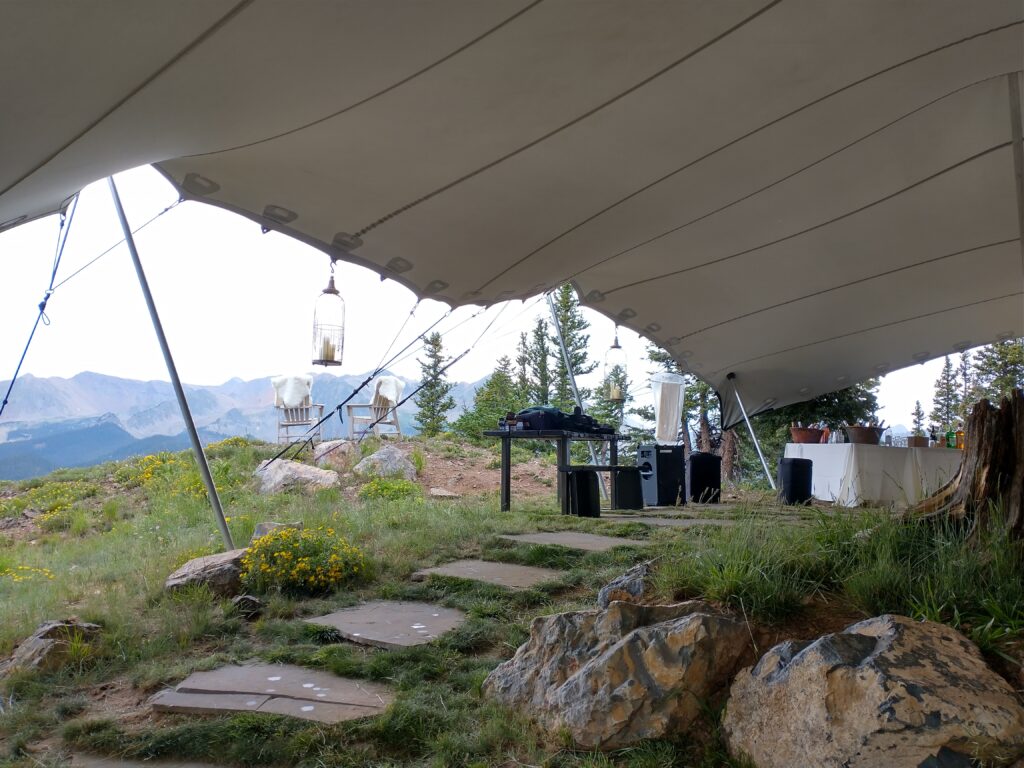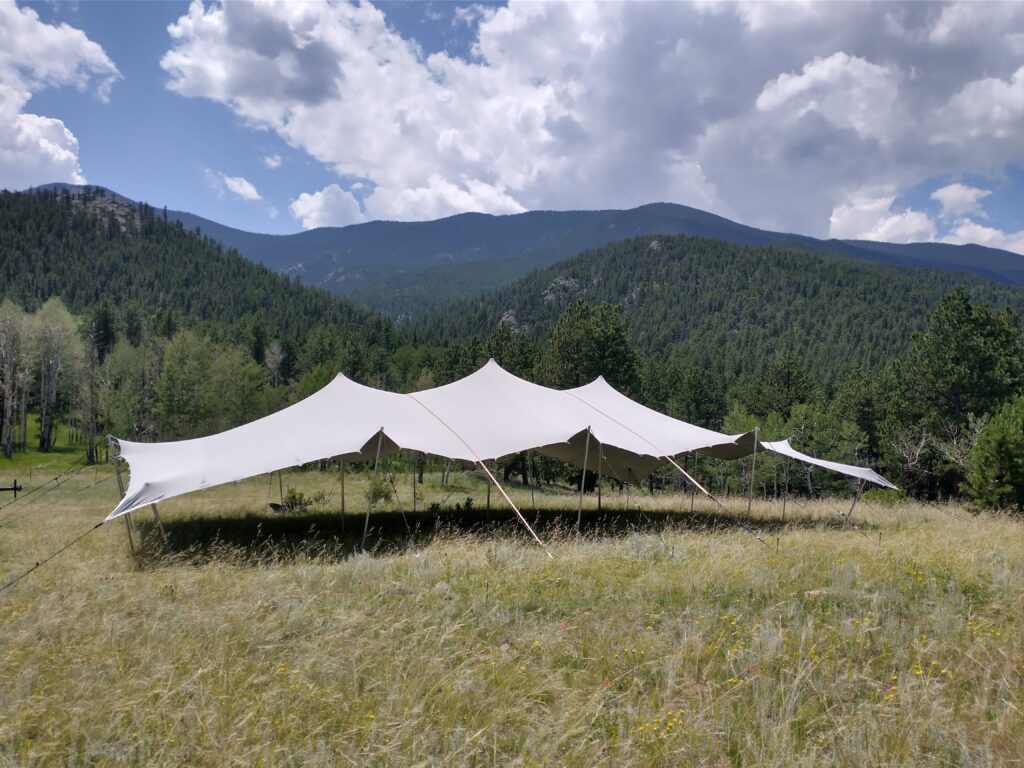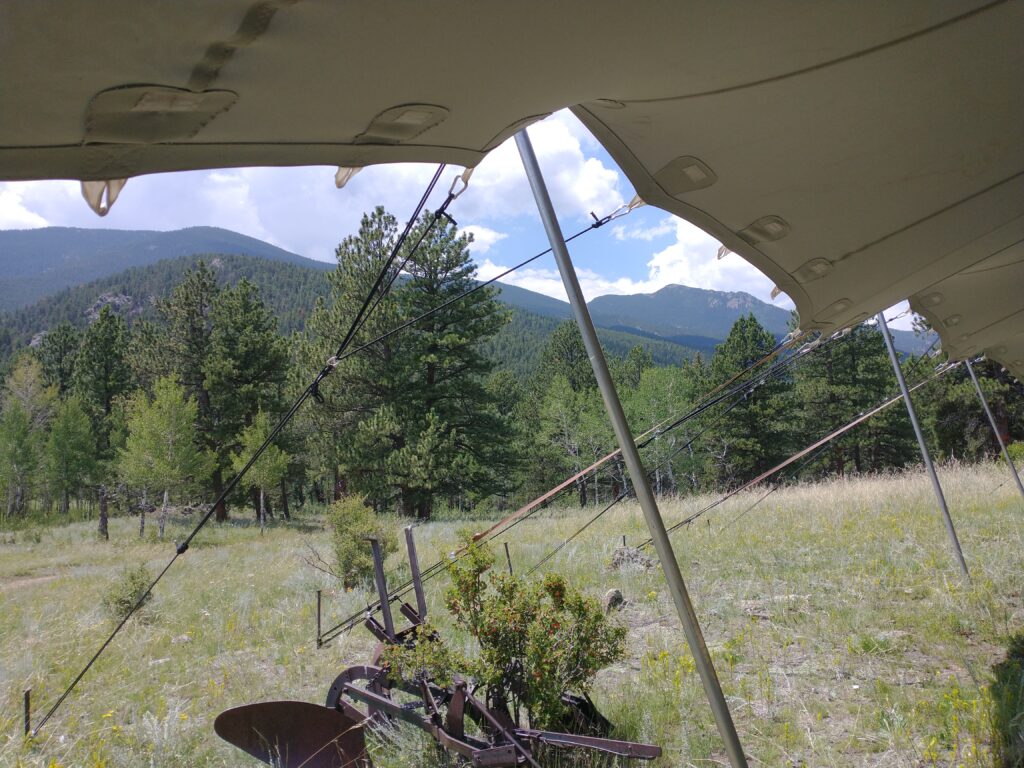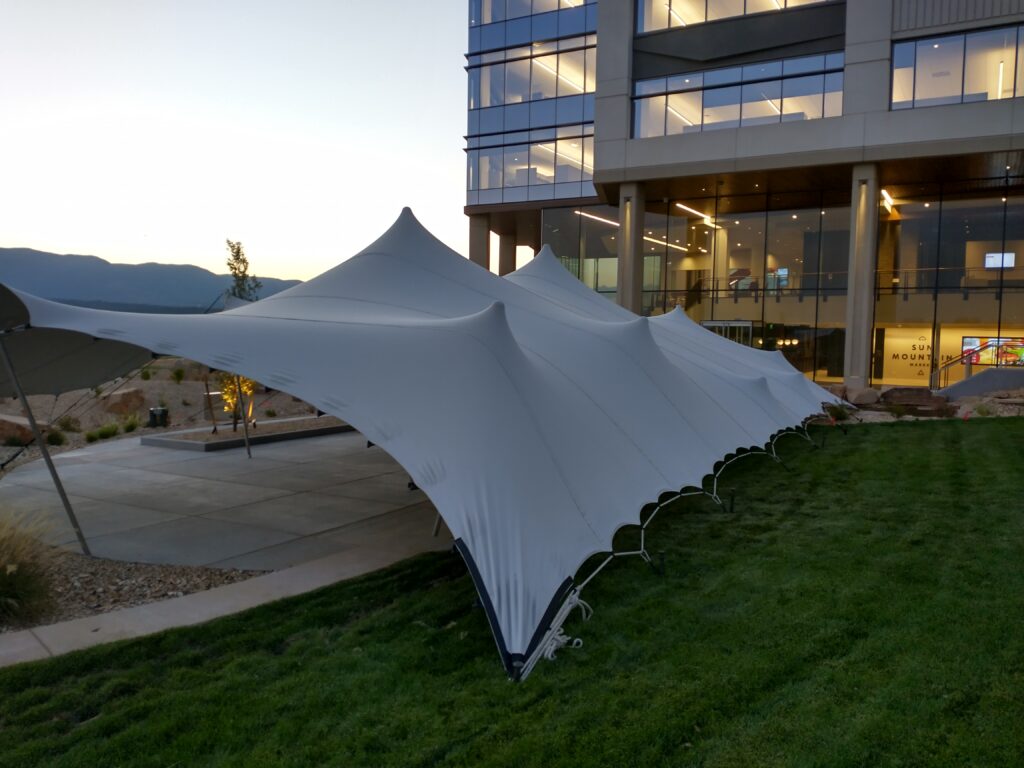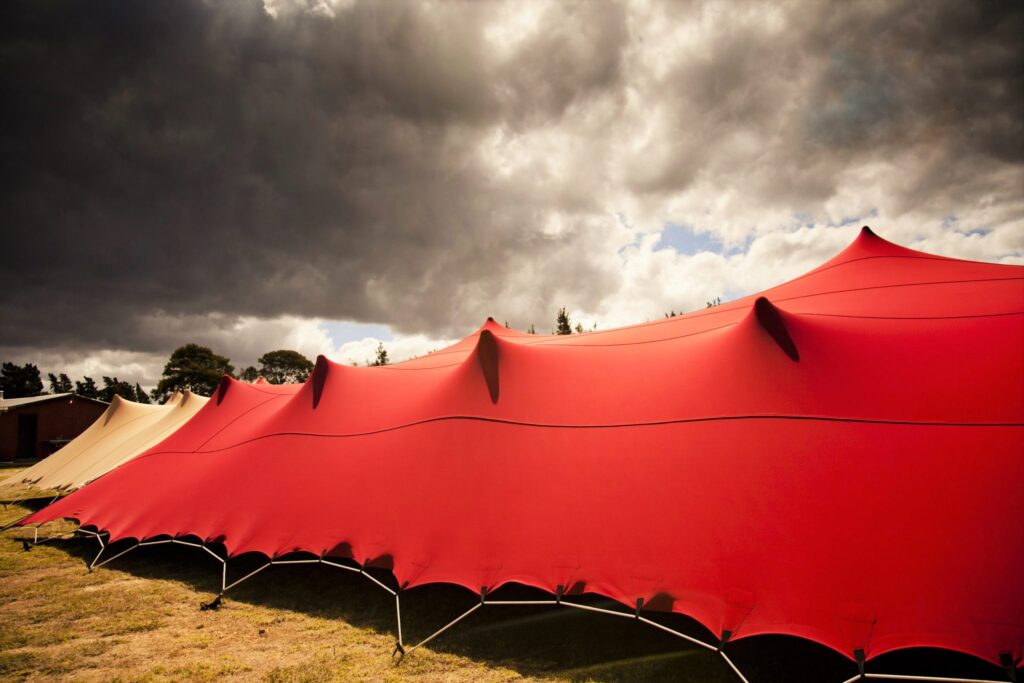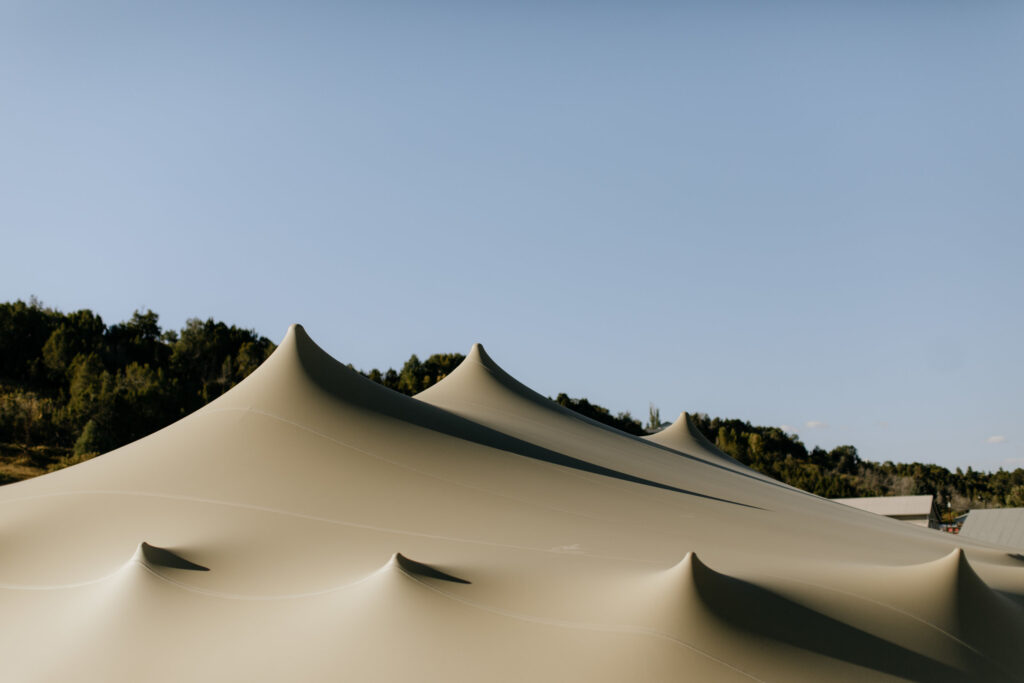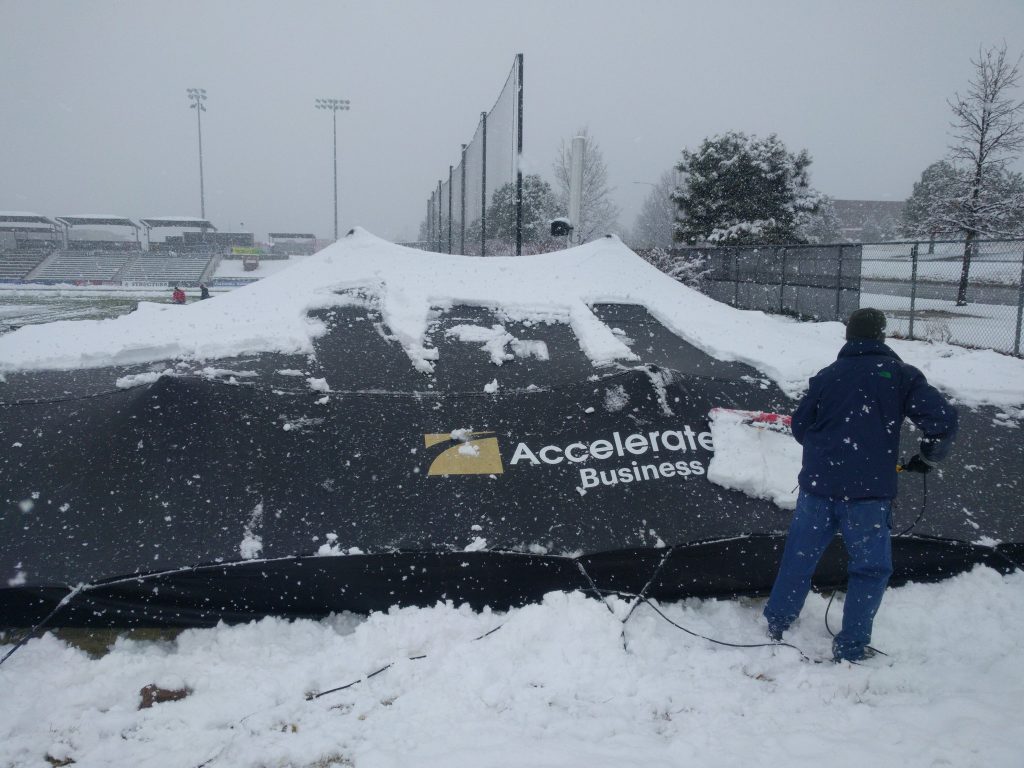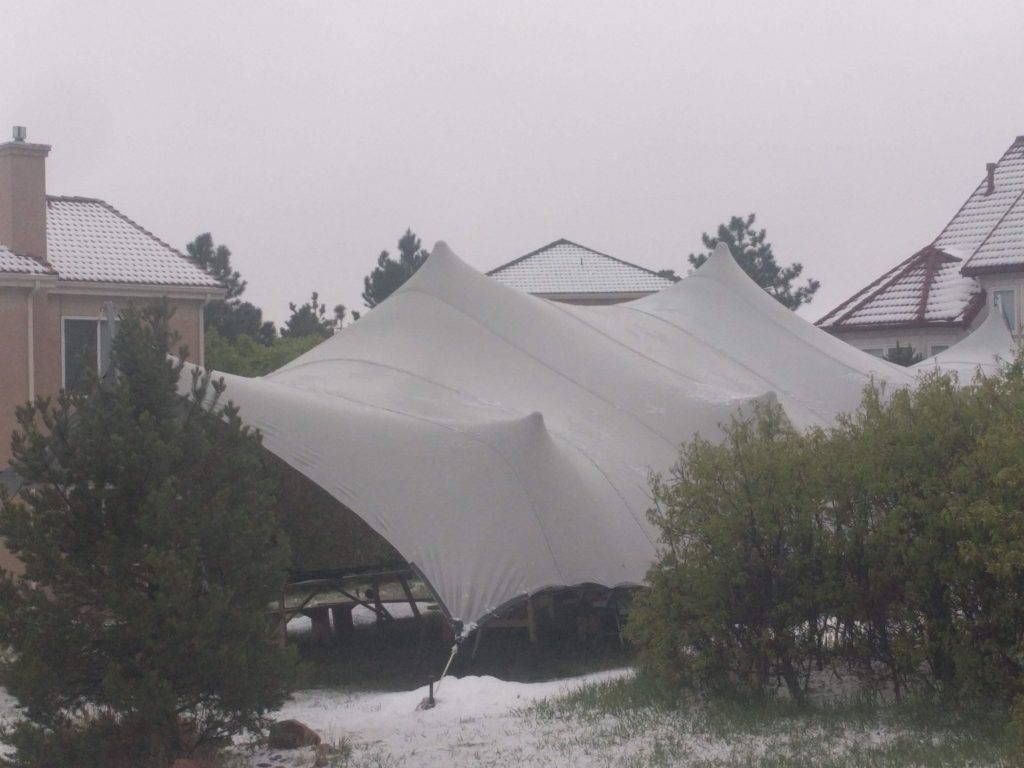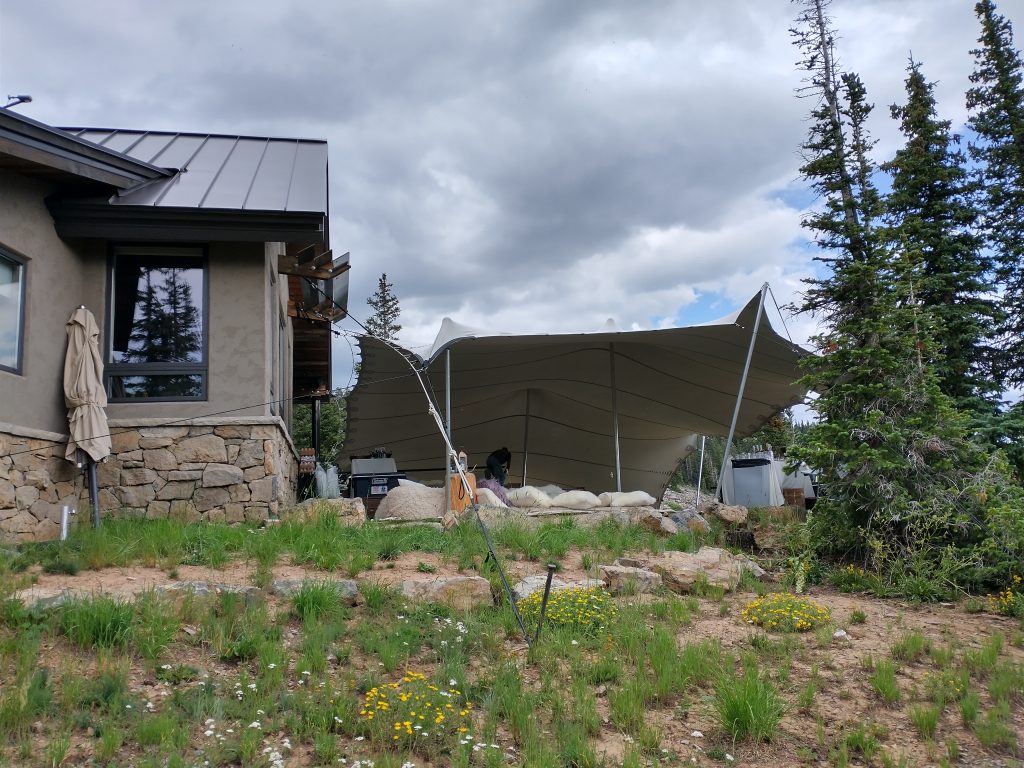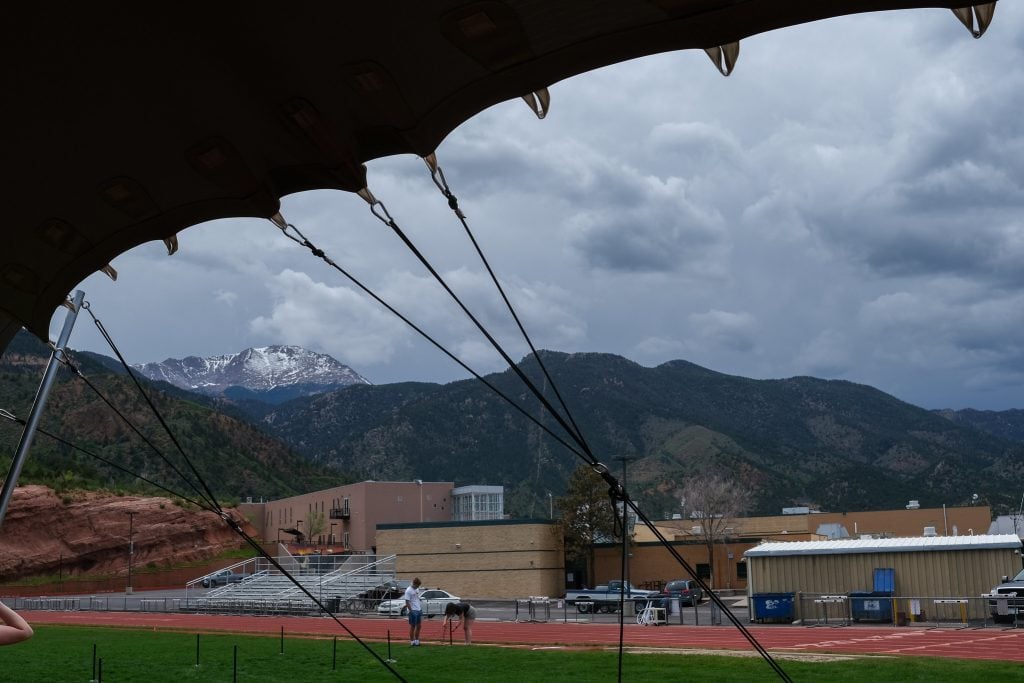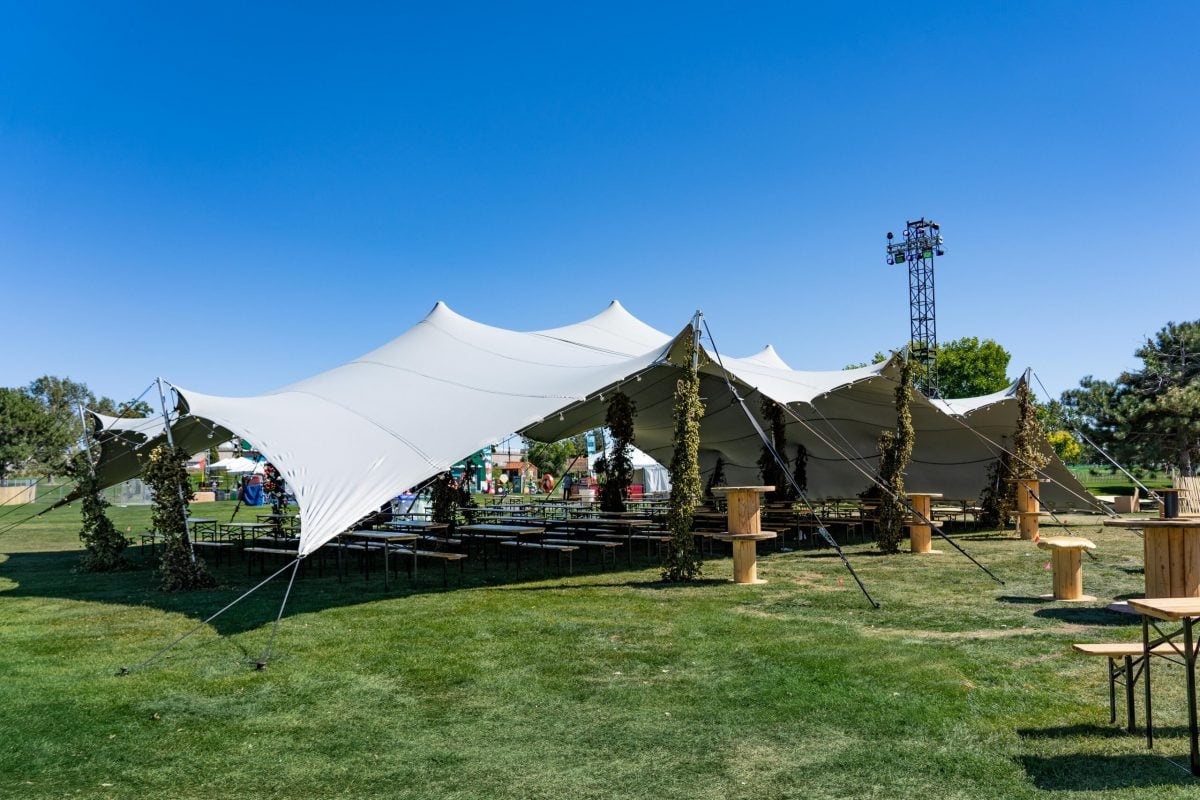Weather forecasts carry no guarantee. Otherwise, tenting would be easier, and cheaper. But whether we pitch for an evening event or a 6 month restaurant enclosure, our stretch tents must withstand a surprise storm. We monitor but don’t count on weather forecasts. If we’ve learned anything from the Rockies, it’s that unexpected storms should be expected.
Before pitching a stretch tent we apply engineering standards to withstand the worst. This starts with sound anchors, engineered pitch options, robust rigging, and mitigation strategies to storm rig a stretch tent.

